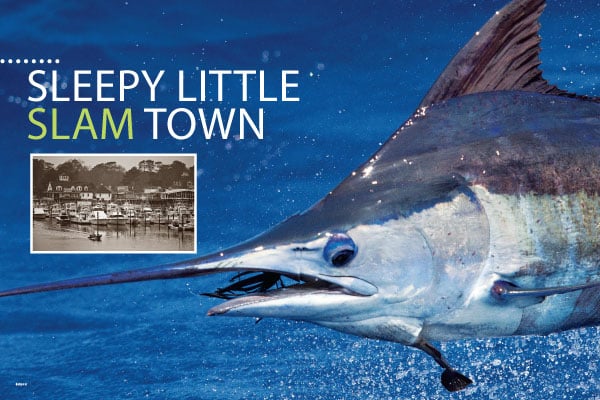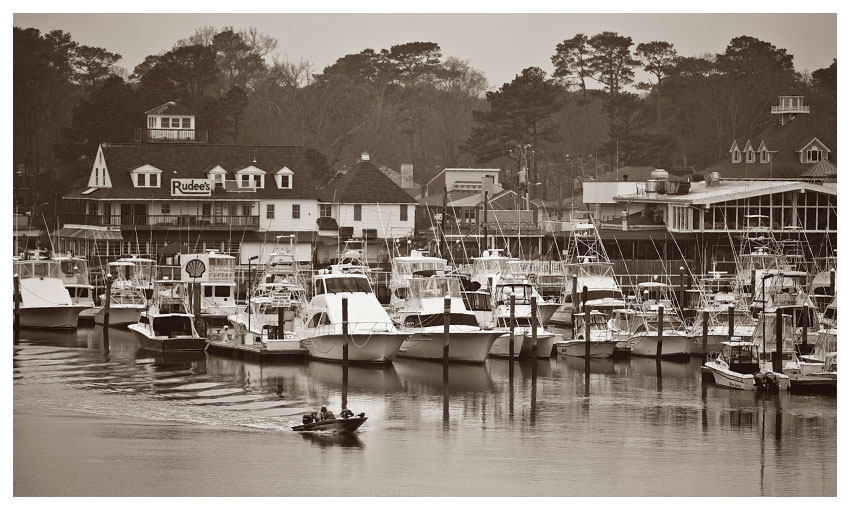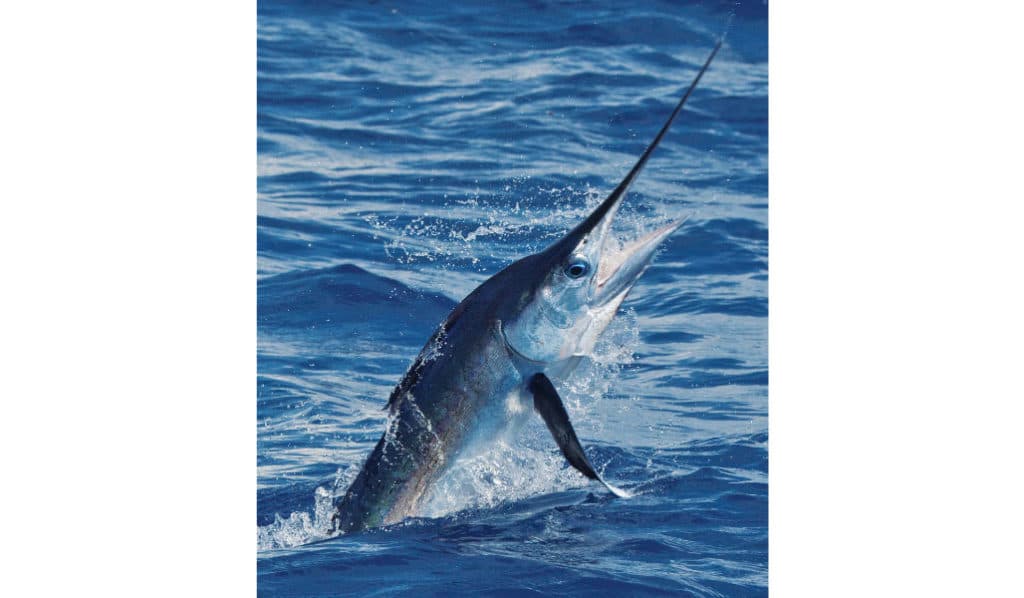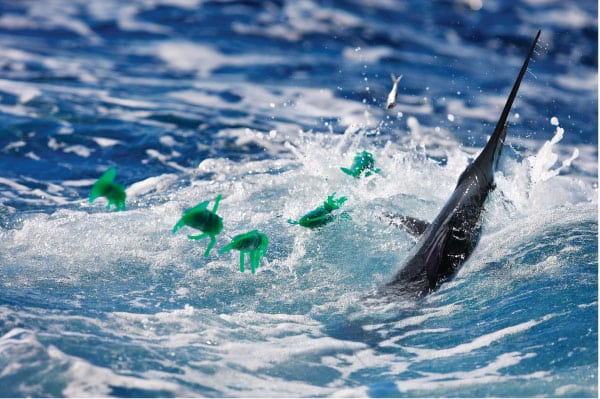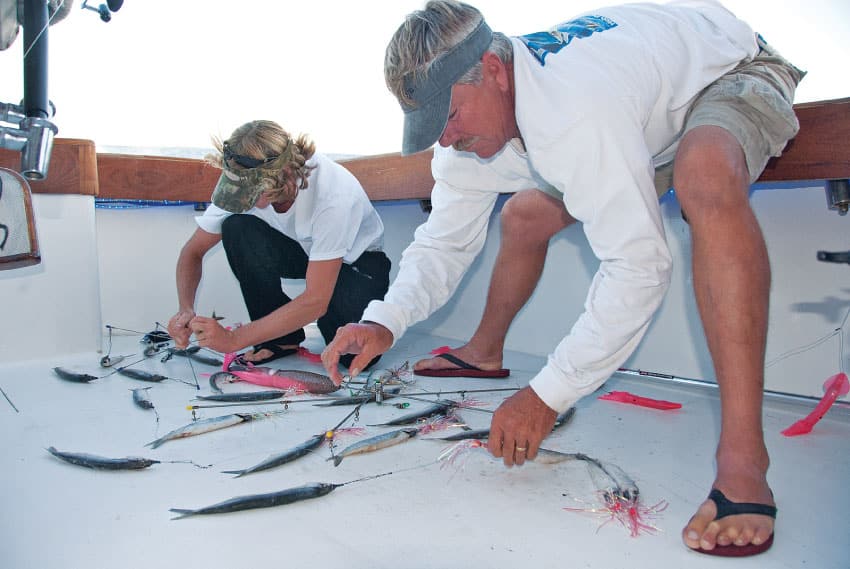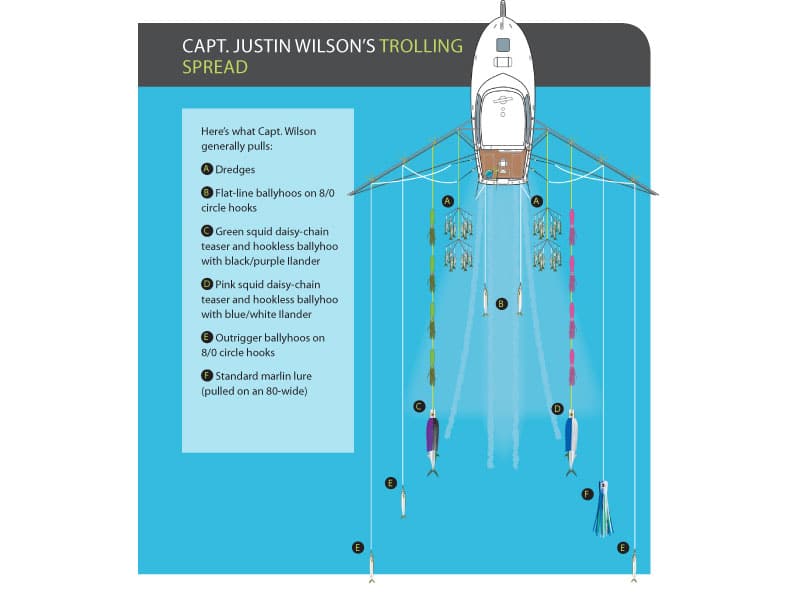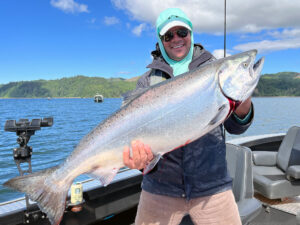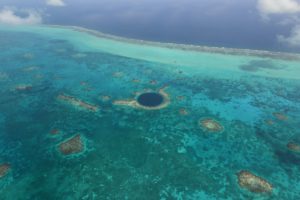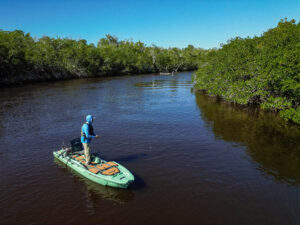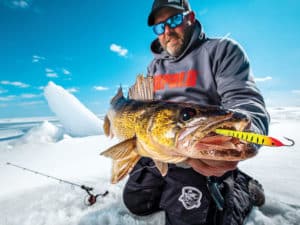Virginia Beach is long known for its incredibly diverse inshore and nearshore fisheries associated with the Chesapeake Bay, but it’s been the offshore haunts that have truly been turning heads lately.
Phenomenal summer and fall runs of white and blue marlin have put this humble little town smack dab on the minds of the best offshore crews along the Eastern Seaboard. And with robust swordfish populations, along with occasional sailfish and spearfish in the mix, there’s always the possibility of scoring a billfish slam for those willing to put in the time.
Things have been so good in Virginia Beach lately that you might call it the new Venezuela.
These Are the Good Old Days
Okay, that might be stretching it a bit.
But there’s no denying things have been on fire. Consider the 26 blue marlin caught last year by Capt. Steve Richardson aboard the Backlash. His previous best season tallied 18 — and he’s fished these waters since the 1960s. Then there was the time a couple of years back that Richardson released 41 white marlin in a single day. And don’t forget Capt. Justin Wilson, who scored 11 whites, a blue and a swordfish for an IGFA Billfish Grand Slam during an overnight trip last September on the Just Right. They also lost several other swords and another blue during that same outing.
Yet, for all Virginia Beach’s great offshore fishing, it has always ceded much of the mid-Atlantic spotlight to the larger charter fleets of Maryland’s Ocean City to the north and North Carolina’s Outer Banks to the south.
But that’s okay with most captains here.
“We’ve always been something of a redheaded stepchild,” chuckles Richardson (757‑286‑0711; backlashsportfishing.com), who runs his 53-foot custom Jim Smith out of the Virginia Beach Fishing Center (757‑491‑8000; virginiafishing.com) inside Rudee Inlet. “But we’re really a central location. The Hatteras and Ocean City fleets can run to our waters, but we can also run to theirs. And the fact is that the really big billfish days usually occur right here — this is where the fish tend to congregate the most.”
Not many would disagree.
Just ask Mitchell Roffer, Ph.D., founder of the popular Roffer’s Ocean Fishing Forecasting Service (roffs.com). Roffer conducted his University of Miami dissertation out of Rudee Inlet in the late 1970s and early ’80s, studying the area’s tuna and billfish populations. Not many know the ins and outs of this region better.
“It’s a phenomenal fishery,” he says. “The numbers of billfish, especially white marlin, that can be caught in a day there are extremely rare for anywhere in the world.”
While a wave of whites annually swim up to Virginian waters from the Outer Banks on the shallow 20- to 30-fathom curves, the majority of the pelagic species — including whites, blues, sails, spears and yellowfin tuna — come via two primary routes, Roffer says. Some swim down from the north, riding in blue, warm-water eddies and filaments that break off the canyons of New York and New Jersey. Other fish move in from the east, out of similar pieces of water that pull off the Gulf Stream.
Then, a beautiful thing happens when these fish arrive off Virginia: They stay put. Even when the plumes of good water depart, the fish remain along the edge of the continental shelf and within the Norfolk and Washington canyons, which range from 55 to 65 miles out.
“There’s a lot of food in these canyons,” explains Roffer. “The marlin will hang around and feed until it gets too cold. You can get great conditions very quickly, particularly if there’s a west wind, which flushes out the Chesapeake Bay and its baitfish. When all that stacks up on a blue-water line, a food chain develops and things can really get going.”
But this has always been the case in Virginia Beach, and it begs the question: Why has the fishing been so good lately?
Good water conditions and a lack of tropical storms certainly have accounted for some of it, and many say the increased use of circle hooks has helped with white marlin mortality. Others point to better management, such as the International Commission for the Conservation of Atlantic Tuna’s requirement of live white marlin release on commercial boats and an overall reduction in the number of hook-sets in the U.S. coastal pelagic longline fishery.
Richardson insists it’s the return of the sardines, which have been absent in these waters for years — and he’s got a theory that the increased longlining of mahimahi up and down the East Coast has actually helped billfish stocks. “Think about it,” he says, “one dolphin on a grass line probably eats more baby billfish in a year than the whole East Coast fleet catches!”
“In reality,” says Dr. John Graves, chair of the Department of Fisheries Science and the Virginia Institute of Marine Science at the College of William and Mary in Williamsburg, “it’s probably some combination of environmental factors and changes to the fishery. But you can’t argue with the results. These are the good old days!”
White and Blue Marlin Mania
Yes, they are — and it all gets started as early as April some years, as water temperatures climb into the upper 60s, and straggler white and blue marlin begin to show. The influx of fish gradually increases into May and June as water temps surpass the 70-degree mark. But it’s between July and early October when the truly large clusters of fish move into Virginia, as the water warms into the 72- to 75-degree range.
Captains generally begin their day working the shallows for whites in areas like the Cigar, a seamount on the 20-fathom line. Then, they’ll often move into the 20- and 30-fathom Fingers, and eventually push out to the continental shelf and Norfolk and Washington canyons, where the possibility of encountering blues increases.
Most of the top charter boats run out of Rudee Inlet, since it offers a straight shot into the Atlantic. Other captains, like Justin Wilson (757‑639‑1571; jwils057@gmail.com), run out of Lynnhaven Inlet. Tucked inside the southern portion of the Chesapeake’s mouth, Lynnhaven requires longer runs to the offshore grounds but convenient inshore access.
Once a productive area is located, the routine is fairly similar for most boats. To bring the marauding whites up to the surface, crews religiously pull two dredges from the stern corners, rigged with fresh mullet, ballyhoo or plastics. Four or five 20- or 30-pound-class rods are positioned in a basic, staggered spread, rigged with small ballyhoos on 7/0 or 8/0 circle hooks and 60-pound leaders. To complete the lineup, a larger outfit — usually with an 80-wide — is baited with either a marlin lure or a horse ballyhoo or mackerel rigged with a Hawaiian Eye (Ilander lure).
“That’s for a blue marlin, should one show,” says Capt. David Wright, who runs High Hopes (757‑286‑3842; highhopessportfishing.com), a 58-foot Gary Davis.
Almost all charter boats here keep pitch-bait rods at the ready as well, generally a light outfit for whites and a heavier rod for blues. And, of course, each captain employs his own bag of tricks. Wilson likes to pull a slightly more complex spread. In addition to the dredges, he adds two teaser lines with squid daisy chains and a horse ballyhoo or small Spanish mackerel rigged with no hook.
“A large number of the whites will come to the teasers,” he says. “Once we see them on the teaser, we pull it away, and drop a flat line back and feed the fish — or the fish will fall back to either the short or long rigger.”
That can make for some craziness in the cockpit, especially in early fall, when the ocean can come alive with whites.
“You can expect to see a dozen per day during that stretch,” says Richardson. “In September, we have days that we see literally uncountable numbers of fish. They come up in wolf packs. You’ll have fish on every rod.”
These hot streaks often last a week or two, and it’s entirely possible for the better boats to catch-and-release 10 or more fish per day at these times.
Then there are the blues.
“Sometimes, we don’t really find them; they find us,” laughs Wright, who holds the state record for four blue marlin catches in one day. “We often fish schools of yellowfin tuna in the same waters that we find the billfish, and sometimes a blue marlin will be among them, either feeding with them or feeding on them.”
The idea is to get the blue to eat the big rod, but it doesn’t always work out that way. “They don’t come in curious like a white marlin,” says Wright. “They come in hot. They’re going to eat.” Sometimes that happens on the big outfit. Other times it doesn’t.
“Twenty of my 26 blues last year were caught on 20s,” says Richardson. “So invariably you’ll lose some fish, because we can get big ones out here. They average 250 to 350 pounds, and the state record is more than 1,000.”
Sword City
Virginia Beach offshore waters also host some very large swordfish. It’s a fishery that many of the longtime captains have been targeting for quite some time. And like the rest of the billfishing, it wasn’t always so good.
“All I used to do back in the 1980s was overnighters,” remembers Capt. Mike Standing, who runs the Waterman (757‑288‑9051; watermansportfishing.com), a 57-foot Custom Carolina. “We’d do wonderful on tunas back then, and if we were lucky, we’d get a swordfish. Now it’s the opposite — you don’t catch the tunas at night, but you catch the swords. The stocks have really rebounded.”
Just like in Florida, where day-dropping has been all the rage recently, Virginia’s swordfish populations have thickened. The problem with swordfishing in Virginia Beach, however, is that there are often too many other things going on — especially during the day.
“We have to make a decision, because the marlin are often jumping in the boat,” says Wilson, who has spent significant time with Florida Keys’ swordfish pioneer Vic Gaspeny. “So we often forgo day-dropping and instead fish the swords at night, then get the marlin in the evening and morning. But once the other fisheries settle down in the winter, we’ll do a day-drop. Most of the charter boats have caught fish doing so — but we’re all still learning.”
Wilson made five swordfish trips last year, mostly at night, and caught multiple fish each trip. His September slam ranked as only the fourth IGFA billfish slam in U.S. waters that included a swordfish; and the young 29-year-old captain lost a huge broadbill last year to a longline buoy after fighting it four hours on a 50.
All the veteran captains agree that it’s a potential gold mine, especially with Virginia Beach’s light currents that allow easier dropping and better contact with baits.
“Once someone starts doing it regularly in the daytime, everyone and their brother will be doing it,” says Wright. “I think it’ll happen, especially if the species is accepted one day into our billfish tournaments.”
Just another notch in a superb billfishing tradition.
